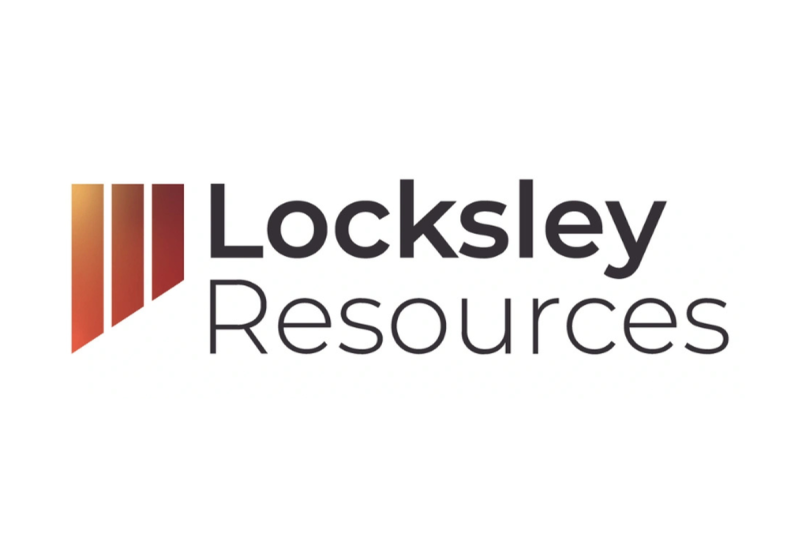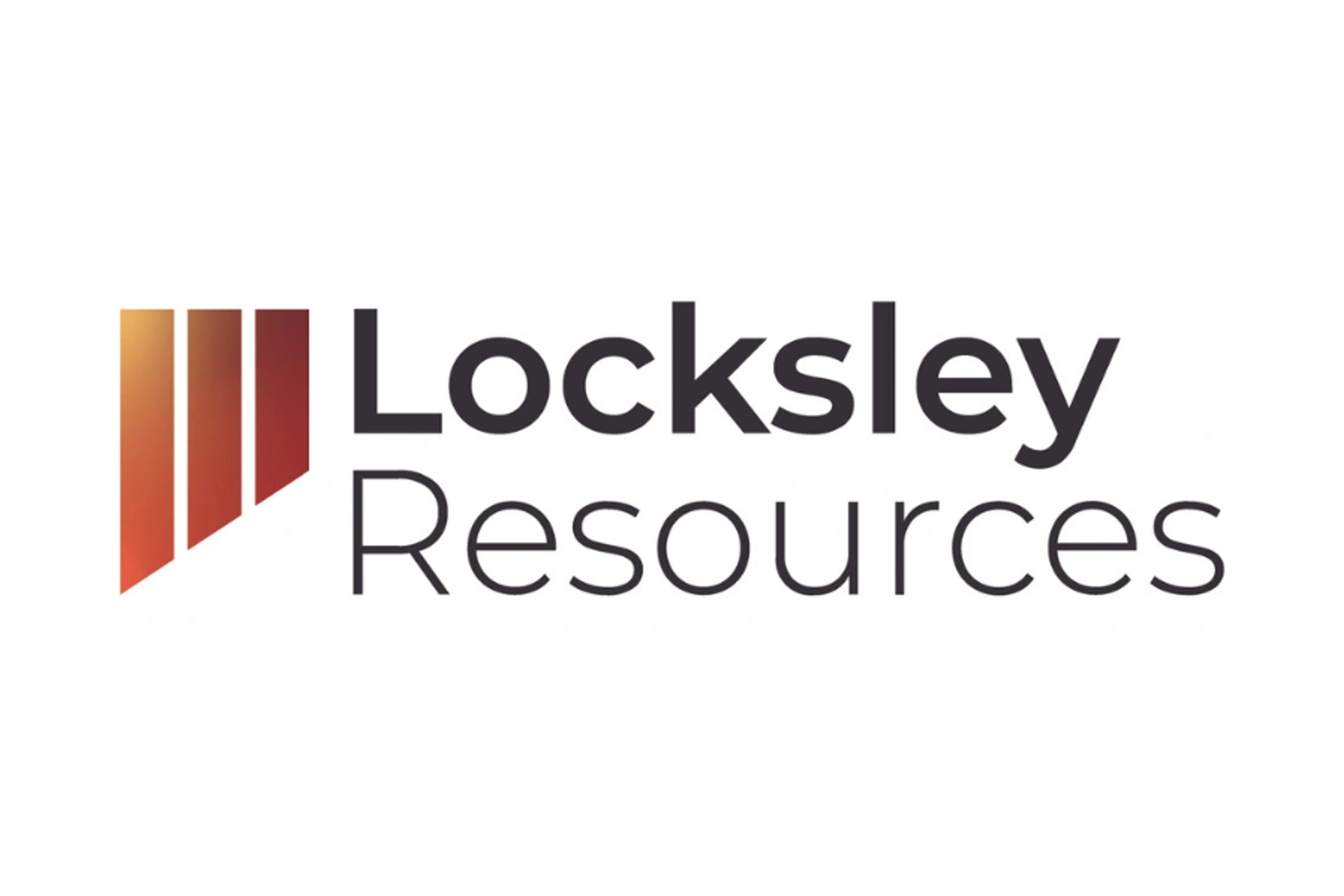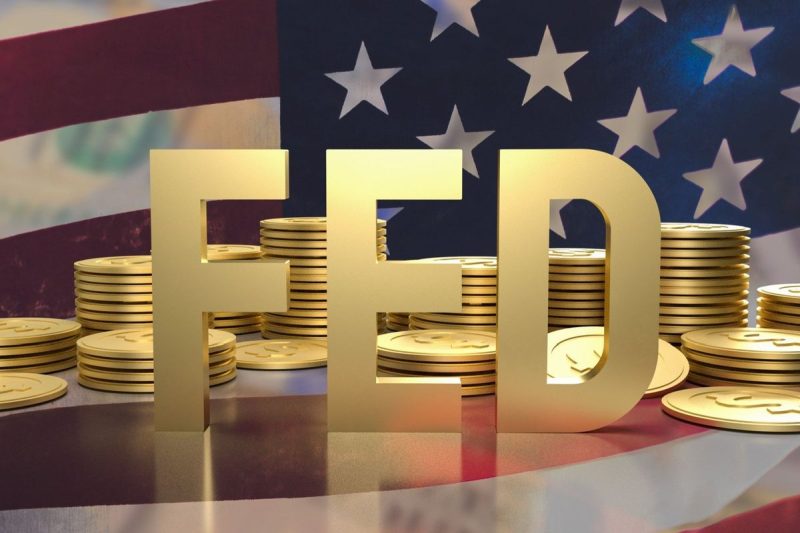
 South Harz Potash Limited (SHP:AU) has announced Licence Applications Submitted for Glava Cu-Au Project Area
South Harz Potash Limited (SHP:AU) has announced Licence Applications Submitted for Glava Cu-Au Project Area
Download the PDF here.

 South Harz Potash Limited (SHP:AU) has announced Licence Applications Submitted for Glava Cu-Au Project Area
South Harz Potash Limited (SHP:AU) has announced Licence Applications Submitted for Glava Cu-Au Project Area
Download the PDF here.

 Jindalee Lithium (JLL:AU) has announced US Government Approves Major Drilling Program at McDermitt
Jindalee Lithium (JLL:AU) has announced US Government Approves Major Drilling Program at McDermitt
Download the PDF here.


Peter Krauth, editor of Silver Stock Investor and Silver Advisor, shares his thoughts on silver’s historic move past US$60 per ounce, saying he sees continued strength in 2026.
While the white metal is famously volatile, he believes it could reach US$70 next year.
Securities Disclosure: I, Charlotte McLeod, hold no direct investment interest in any company mentioned in this article.


Gerard Bond, president and CEO of OceanaGold (TSX:OGC,OTCQX:OCANF), shares recent company highlights and discusses gold’s strong 2025 performance.
In his view, the yellow metal’s key drivers are de-dollarization, stagflation concerns, central bank buying and geopolitical uncertainty, all of which look set to continue next year.
Securities Disclosure: I, Charlotte McLeod, hold no direct investment interest in any company mentioned in this article.


HIGHLIGHTS
– Expression of Interest (EOI) issued to Tier 1 U.S. engineering firms to lead the upcoming Scoping Engineering Design for the Desert Antimony Mine pilot plant
– Study to integrate ongoing metallurgical optimisation, enabling concurrent advancement of engineering design and processing flowsheets
– Partner selection to prioritise U.S. based capability, permitting familiarity and alignment with domestic critical mineral policy
– Critical step in Locksley’s U.S. mine to market strategy, progressing toward commercial antimony production and downstream material readiness
– Supports U.S. government initiatives to rebuild domestic antimony processing capability and reduce reliance on foreign supply chains
– Locksley is well funded for 2026 work programs with over $20 million in cash
In October 2025, the Company’s Chief Operating Officer met with senior executives from several leading U.S. based engineering firms to align on study objectives, execution strategy and the availability of local capability to support an accelerated project development pathway. These engagements have now progressed to the formal issuance of an Expression of Interest (EOI) to a shortlist of selected Tier 1 groups.
Strong response from Tier 1 Engineering Firms
The response to the EOI has been highly encouraging, with proponents recognising Locksley’s well structured development strategy and the Project’s alignment with U.S. federal priorities to rebuild domestic critical mineral supply chains.
Respondents also acknowledged the Company’s disciplined approach to early technical de-risking and pragmatic study execution, consistent with best practice project development frameworks.
A core objective of the EOI process is to assess each firm’s demonstrated experience operating in San Bernardino County, including regulatory engagement, permitting pathways and stakeholder management. This regional experience is considered an essential requirement for ensuring timely delivery of the subsequent project phases.
Integrated Metallurgical and Engineering Workstreams
In parallel with the EOI, ongoing metallurgical optimisation work continues to refine processing flowsheets, improve recoveries and validate key mass balance assumptions.
These outcomes will directly inform the engineering basis, enabling the Company to advance both study and metallurgical workstreams concurrently. This integrated approach is intended to maintain development momentum and support efficient delivery of a technically robust definition process.
Kerrie Matthews, Managing Director & CEO, commented:
‘With the completion of our recent capital raise we are fast tracking our 2026 initiatives. We are now engaging with leading U.S. engineering firms as an Expression of Interest. The strong response to our Expression of Interest highlights confidence in our development strategy and confirms that we have access to the technical capability and local U.S. experience required to advance the Project efficiently.
Our ongoing metallurgical optimisation work will feed directly into the scoping study, allowing engineering design, economic evaluation and project planning to progress without delay. This integrated execution strategy ensures the Desert Antimony Project continues to advance at speed toward the next stage of development.
Next Steps:
– Evaluation of EOI submissions, including review of technical expertise and local operating experience
– Issuance of a formal Request for Proposal (RFP) for the PFS and site investigation scopes by mid-Q1 2026
– Award of professional services contracts in separable work packages, with processing related scopes targeted for award by the end of Q1 2026 and mine engineering packages timed to align with upcoming exploration outcomes at the Desert Antimony Mine Project
To view the video: An overview of the Desert Antimony mine to market plan and key deliverables for downstream processing capability, please visit:
https://www.abnnewswire.net/lnk/6STFWM5K
About Locksley Resources Limited:
Locksley Resources Limited (ASX:LKY,OTC:LKYRF) (FRA:X5L) (OTCMKTS:LKYRF) is an ASX listed explorer focused on critical minerals in the United States of America. The Company is actively advancing exploration across two key assets: the Mojave Project in California, targeting rare earth elements (REEs) and antimony. Locksley Resources aims to generate shareholder value through strategic exploration, discovery and development in this highly prospective mineral region.
Mojave Project
Located in the Mojave Desert, California, the Mojave Project comprises over 250 claims across two contiguous prospect areas, namely, the North Block/Northeast Block and the El Campo Prospect. The North Block directly abuts claims held by MP Materials, while El Campo lies along strike of the Mountain Pass Mine and is enveloped by MP Materials’ claims, highlighting the strong geological continuity and exploration potential of the project area.
In addition to rare earths, the Mojave Project hosts the historic ‘Desert Antimony Mine’, which last operated in 1937. Despite the United States currently having no domestic antimony production, demand for the metal remains high due to its essential role in defense systems, semiconductors, and metal alloys. With significant surface sample results, the Desert Mine prospect represents one of the highest-grade known antimony occurrences in the U.S.
Locksley’s North American position is further strengthened by rising geopolitical urgency to diversify supply chains away from China, the global leader in both REE & antimony production. With its maiden drilling program planned, the Mojave Project is uniquely positioned to align with U.S. strategic objectives around critical mineral independence and economic security.
Tottenham Project
Locksley’s Australian portfolio comprises the advanced Tottenham Copper-Gold Project in New South Wales, focused on VMS-style mineralisation
Source:
Locksley Resources Limited
Contact:
Kerrie Matthews
Chief Executive Officer
Locksley Resources Limited
T: +61 8 9481 0389
Kerrie@locksleyresources.com.au
News Provided by ABN Newswire via QuoteMedia
A group of moderate Republicans is defying House GOP leaders to try and force a vote on extending enhanced Obamacare subsidies that expire at the end of this year.
Republicans led by Rep. Brian Fitzpatrick, R-Pa., on Wednesday filed a measure known as a discharge petition, a mechanism designed to force a vote on legislation over the wishes of leadership, provided it gets support from a majority of House lawmakers.
A dramatic series of events unfolded on the House floor as House GOP leaders worked to win support for an unrelated vote that first appeared poised to fail.
While a group of conservatives threatened to mutiny Republicans on that vote for separate reasons, several moderates also appeared to withhold their votes altogether, and Fox News Digital witnessed them in tense discussions with Speaker Mike Johnson, R-La., and other GOP leaders.
Those moderates eventually voted in favor of passing the legislation at hand before marching to the front of the House chamber to file their discharge petition. They lined up one by one to sign the document that would move their healthcare agenda full steam ahead despite Johnson signaling little appetite to entertain it.
So far, the petition has support from six House Republicans and two Democrats but is expected to grow in numbers as the clock ticks on the looming healthcare cost cliff awaiting millions across the country.
‘We know we need a temporary extension of the tax credits — with reforms — and then we can do more serious things, but we’re not gonna do serious changes to the [Affordable Care Act] in the next two or three weeks,’ Rep. Don Bacon, R-Neb., one of the signatories, told Fox News Digital. ‘So, we just felt like, since there doesn’t seem to be any impetus to do this, we’re gonna try to force the issue.’
Asked if he believed they would get House GOP leaders’ blessing, Bacon said, ‘Probably not.’
Fitzpatrick’s bill is aimed at advancing a two-year extension of Obamacare subsidies that Democrats expanded during the COVID-19 pandemic.
Democrats in Congress voted twice during the pandemic to expand the availability of premium tax credits for Obamacare, also called the Affordable Care Act (ACA), to make sure more Americans had access to healthcare coverage.
A majority of House Republicans have signaled they are not open to extending them, at least not without significant reforms. Conservatives in particular have panned the enhanced subsidies as a COVID-19-era relic that benefited insurance companies rather than Americans.
But some GOP lawmakers have joined Democrats in warning that failing to extend them at least temporarily at this point will result in millions of Americans seeing their healthcare premiums skyrocket while Congress refuses to act.
Rep. Ryan Mackenzie, R-Pa., another Republican who signed the petition, said House GOP leaders signaled they would be ‘putting forward’ a number of healthcare reforms ‘that are very positive in nature,’ but ‘an extension of the ACA tax credits was not included in that package.’
‘So, we have been talking about and advocating for that to move forward, and so this seems like the best vehicle to do that,’ Mackenzie said.
He told Fox News Digital, ‘The reason we’re in this mess to begin with is that things were done in a partisan fashion. And, so, I think if we want longevity and reforms and changes, we should be doing it in a bipartisan fashion.
‘It’s a time-sensitive matter, and it’s an existential matter for people back home who we care about where this is a very real problem,’ Fitzpatrick told reporters. ‘You try to do things through the normal course, you try to do things through regular order. When all those remedies are exhausted, then you’ve got to go this route, unfortunately.’
Asked if it was spurred at all by moderates’ conversation on the House floor with Johnson, Rep. Mike Lawler, R-N.Y., said, ‘It was clear that, given the timeframe and given some of the differences within our conference on particular issues, that a bill was not going to be put forward. And so I think we all recognize the importance of getting an extension passed.’
But it’s not clear whether House Democratic leaders, who have their own discharge petition for a three-year extension of the Obamacare subsidies, will support the bill. It likely will not succeed without buy-in from all House Democrats.
Asked if his leaders would back it, Rep. Jared Golden, D-Maine, said, ‘Go ask them. But I think they ought to.’
Johnson, for his part, told reporters discharge petitions were ‘typically used as a tool against the majority’ but said he was ‘very sympathetic’ to moderate Republicans’ concerns.
‘We have spent many, many hours trying to find a way out of the conundrum that we’re in. With regard to those extensions, there’s a lot of people who are very concerned about Obamacare and the fact that the subsidies were created by Democrats for COVID-era limited use,’ Johnson said.
‘We just can’t get Republican votes on that for lots of reasons, not enough of them. And, so, look, my colleagues have made a decision. I don’t take it against them personally, I don’t operate that way. I have great respect for those guys, I understand the situation they’re in for their districts, and we’ll see how it plays out.’


The US Federal Reserve held its last meeting of 2025 from Tuesday (December 9) to Wednesday (December 10) amid growing division between doves and hawks as labor market and inflation concerns rise.
The central bank met analysts’ expectations by lowering the federal funds rate by 25 basis points to the 3.5 to 3.75 percent range. It marks the third time this year that the Fed has cut interest rates.
Interest rates haven’t been at this level since mid-2022.
Preceding the October rate decision, the Fed Board of Governors was reportedly split between those concerned with preventing a further slowdown in the US labor market and those fearing the fight against inflation is far from over.
Lowering rates in turn lowers the cost of borrowing, which can provide businesses with more runway to grow their workforce. However, increasing available money supply by easing access to borrowing can also increase inflation.
The split between doves and hawks is still plaguing the Fed heading into the new year, which promises to see current Fed Chair Jerome Powell replaced with someone more likely to be on board with the much lower rate environment favored by the Trump administration. Two Fed board members cast dissenting votes against cutting rates this time around, while Trump loyalist Governor Stephen Miran favored a 0.5 percent cut.
By the end of the year, US President Donald Trump intends to announce a replacement for Powell, whose term expires in May 2026. Trump has criticized the Fed and Powell in particular, saying they haven’t lowered rates quickly enough.
On October 27, US Secretary of the Treasury Scott Bessent announced a shortlist of candidates to replace Powell, including Fed Governors Christopher Waller and Michelle Bowman, National Economic Council Director Kevin Hassett, former Fed Governor Kevin Warsh and BlackRock (NYSE:BLK) executive Rick Rieder.
The US government shutdown delayed the study and release of key economic data, which has left the Fed flying blind when it comes to planning the best course of action for the country’s economy. Even though the shutdown ended on November 12, Reuters states that there is still a bottleneck in economic reports and the Fed board will not receive a large tranche of data from statistical agencies, ‘including job and inflation reports for November that could help resolve the core debate among central bankers,’ until days after Wednesday rate announcement.
Looking at what data is available, the September unemployment rate ticked up to 4.4 percent, while the core inflation rate was 2.8 percent, still above the Fed’s 2 percent target. Despite this higher inflationary environment, a weakening labor market has become the focus of the Fed’s dual mandate of stable prices and maximum employment.
In his speech to reporters, Powell blamed sticky inflation on Trump’s tariffs. “These readings are higher than earlier in the year, as inflation for goods has picked up, reflecting the effects of tariffs,” he said.
Powell is taking the view that this effect may be short lived if the Fed can mitigate the risk of a more entrenched inflationary environment: “Our obligation is to make sure that a one-time increase in the price level does not become an ongoing inflation problem, but with downside risks to employment having risen in recent months, the balance of risks has shifted. Our framework calls for us to take a balanced approach in promoting both sides of our dual mandate.’
At its October meeting, the Fed said it would put a stop to its quantitative tightening activities as of December 1.
For the past three years, the independent government agency has been working to reduce its balance sheet from US$9 trillion in 2022 to US$6.6 trillion today. On Wednesday, the Fed signaled it will once again be buying US Treasuries, to the tune of US$40 billion starting on Friday (December 12).
“The Committee judges that reserve balances have declined to ample levels and will initiate purchases of shorter-term Treasury securities as needed to maintain an ample supply of reserves on an ongoing basis,” said the Fed.
The gold price traded in a right range around the US$4,200 per ounce level in the lead up to the Fed’s decision, spiking as high as US$4,230 following Powell’s speech. Lower interest rate environments lead to lower returns on fixed-income investments like bonds, which makes gold a more attractive investment. Silver spiked to a new all-time high above US$61 per ounce on Wednesday morning and managed to stay above US$61 following Powell’s statement.
Julia Khandoshko, CEO at the broker Mind Money, advised investors that US trade policy may matter more for gold in the coming year than the Fed’s monetary policies.
‘This is a thing that can change the rules of the game much more than a single meeting of the regulator. It is also unpredictable, unlike the other political or economic events. Therefore, it is important to monitor the Fed, but building a strategy solely around its decisions is no longer always justified,’ added Khandoshko
Equities reactions were fairly mixed following Powell’s statement on Wednesday, with the S&P 500 (INDEXSP:INX) up 0.47 percent to reach 6,872.35. Meanwhile, the Nasdaq-100 (INDEXNASDAQ:NDX) gained 0.08 percent to come in at 23,594.07, and the Dow Jones Industrial Average (INDEXDJX:DJI) was down 0.89 percent, coming to 47,982.86.
The next Fed interest rate decision will come on January 28, the first Fed meeting for 2026.
Securities Disclosure: I, Melissa Pistilli, hold no direct investment interest in any company mentioned in this article.
The U.S. has seized a Venezuelan oil tanker, President Donald Trump announced Wednesday, marking a sharp escalation in tensions with Caracas.
‘We’ve just seized a tanker on the coast of Venezuela. Large tanker, very large. Largest one ever seized action. And, other things are happening. So you’ll be seeing that later. And you’ll be talking about that later with some other people,’ Trump said at the White House.
The move is likely to further strain relations with Nicolás Maduro’s government, which already is subject to extensive U.S. sanctions targeting Venezuela’s oil sector. It comes after U.S. military strikes have targeted alleged narcotraffickers near Venezuela at least 22 times since September, killing 87 people.
The seizure was led by the Coast Guard and supported by the Navy, a U.S. official told the Associated Press. The Coast Guard and U.S. Southern Command directed Fox News Digital back to the White House, which could not be reached for comment.
The Trump administration is considering launching land strikes on Venezuelan territory in an effort to further ramp up pressure on Maduro, who the U.S. views as the illegitimate leader of Venezuela and the leader of the Cartel de Los Soles drug trafficking cartel.
Trump recently said Maduro’s ‘days are numbered’ and refused to rule out a ground operation in the South American country.
‘I don’t want to rule in or out,’ Trump told Politico. ‘I don’t talk about it.’
Venezuela has some of the largest oil reserves in the world and exports close to 750,000 barrels per day. Around half goes to China, according to Kplr data.
Prior to broad sanctions, Venezuela was historically a major crude-oil supplier for the U.S.
After sanctions on Venezuela’s state oil company Petróleos de Venezuela SA (PDVSA) in 2019, imports dropped sharply. Limited sanctions relief and occasional licensing, notably for Chevron, allowed some Venezuelan crude to flow again to U.S. refineries in 2024 and 2025. Trump revoked Chevron’s license to purchase oil from Caracas earlier in 2025.
The region around Venezuela has seen the largest U.S. military buildup in decades, including the presence of the world’s largest aircraft carrier, USS Gerald R. Ford, and the deployment of 10 F-35 jets to Puerto Rico to support Southern Command operations. On Tuesday, two F/A-18 flew over the waters north of Venezuela in training.
In November, President Trump directed airlines to steer clear of the area — a move that raised speculation among analysts that Washington was preparing for land strikes.
Trump and Maduro recently held a phone call, but the two sides failed to come to an agreement that would have seen Maduro leave power.
Oil revenue remains the central pillar of Venezuela’s collapsing economy, with the country relying heavily on discounted exports to China and other buyers willing to navigate sanctions exposure.
The nation moves much of its crude through a shadow network of reflagged tankers, shell companies and ship-to-ship transfers designed to conceal the origin of its oil. Many vessels operate with their transponders off or spoofing locations to avoid detection.
This is a developing story. Please check back for updates.
Senate Republicans rammed through the first procedural hurdle on their road to confirming nearly 100 of President Donald Trump’s nominees on Wednesday.
The move tees up a later vote on 97 of Trump’s picks and marks the third time Senate Republicans advanced a bloc of the president’s nominees since changing the confirmation rules in September.
The final vote to confirm the latest tranche of picks is expected next week. Once Republicans clear this latest package, they will have confirmed over 400 of Trump’s picks during the first year of his second term.
That benchmark would place him well ahead of former President Joe Biden, who at the same point in his presidency had 350 of his nominees confirmed.
Among the list of nominees are former Rep. Anthony D’Esposito, R-N.Y., to serve as inspector general at the Department of Labor, and two picks for the National Labor Relations Board, James Murphy and Scott Mayer, among several others across nearly every federal agency.
The inclusion of Murphy and Mayer in the package comes after Trump fired National Labor Relations Board member Gwynne Wilcox, a move that was ultimately found to be legal by the Supreme Court earlier this year.
It’s also Senate Republicans’ second attempt to move this package after Sen. Michael Bennet, D-Colo., objected last week in a bid to derail the process.
Senate Republicans went nuclear and changed the rules surrounding the confirmation process in a bid to break through Senate Democrats’ monthslong blockade of Trump’s nominees and limited the scope to only sub-Cabinet-level positions that would be advanced through a simple, 50-vote majority.
But one of the nominees in the original package, Sara Carter, a former Fox News contributor whose legal name is Sara Bailey, was considered a ‘Level 1’ nominee, meaning she would hold a Cabinet-level position.
Trump tapped Carter in March to be his drug czar as director of the Office of National Drug Control Policy.
Carter’s inclusion in the package meant that if Republicans wanted to confirm the 87 other nominees and her, they would have to break the 60-vote filibuster threshold. That outcome was highly unlikely, given Senate Democrats’ near-universal disapproval of several of Trump’s picks and accusations that many were not qualified to serve in the positions they had been tapped to fill.
Senate Republicans took advantage of the opportunity, however, and moved instead to offer a new, more beefed-up package that added nine more nominees.
Russian Foreign Minister Sergey Lavrov warned on Wednesday that Moscow will retaliate if European governments deploy troops to Ukraine or seize frozen Russian assets to support Kyiv, according to Reuters.
Lavrov delivered the remarks before the Federation Council, Russia’s upper house of parliament, outlining Moscow’s stance on the war and its clash with the West. Reuters reported that Lavrov insisted Russia does not seek war with Europe but is prepared to act if it views Western countries as escalating the conflict.
‘We will respond to any hostile steps, including the deployment of European military contingents in Ukraine and the expropriation of Russian assets. And we are already prepared for this response,’ Lavrov said, according to Reuters.
Lavrov also praised President Donald Trump’s approach to a potential settlement, calling him the ‘only Western leader’ who understands what he described as the reasons the war was ‘inevitable.’ He said Moscow appreciates Trump’s interest in dialogue but noted Trump is ‘not only in no hurry to lift, but is actually increasing’ sanctions on Russia, Reuters reported.
His comments referenced Trump’s criticism of Europe earlier this week. In an interview with Politico on Monday, Trump said European leaders ‘talk but they don’t produce,’ describing them as ‘weak’ and focused on being ‘politically correct.’ He added that he plans to continue endorsing European political figures who share his views, even if it ‘provokes pushback.’
European Council President António Costa rebuked Trump’s remarks, telling an audience at the Jacques Delors Institute conference in Paris on Monday: ‘If we are allies, we must act as such — and allies do not threaten to interfere in each other’s domestic political life and democratic choices,’ according to Reuters. Costa added that Europe and the U.S. ‘no longer share’ the same vision of the international order.
As Lavrov accused Europe of obstructing peace efforts, Ukrainian President Volodymyr Zelenskyy announced what he called the first formal meeting with senior Trump administration officials on Ukraine’s reconstruction.
In a post on X on Wednesday, Zelenskyy wrote: ‘Together with our team, I held a productive discussion with the American side… In fact, this could be considered the first meeting of the group that will work on a document concerning the reconstruction and economic recovery of Ukraine.’
He said they discussed ‘key elements for recovery, various mechanisms, and visions for reconstruction’ and reviewed updates to the ’20 points of the framework document for ending the war.’ Zelenskyy added that ‘overall security… will determine economic security and underpin a safe business environment.’
The Ukrainian president said both sides agreed to continue talks, adding: ‘As always, there will be no delays on our side. We are working to deliver results.’ He closed by thanking Trump, writing: ‘I thank President Trump and his team for their substantive work and support.’
Reuters contributed to this article.